|
Thank you for a great year monitoring in 2019!
Last year 74 volunteers at 34 different lakes monitored the health of Snohomish County lakes. Thank you for your time and dedication. Each year we like to send a newsletter to recognize your great work, share some fun lakes-related information, and give you an update of our other projects. To start we'd like to welcome our new volunteers: Julie at Ballinger, Jeff & Mikah at Crystal, Janet & Joe at Echo, Ashley at Flowing, Steve at Ketchum, Steve at Nina, Alisa at Riley, and Ben & Bill at Silver.
|
|
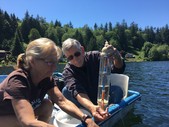 Cherie & Jim at Howard
|
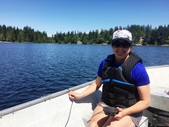 Ashley at Flowing
|
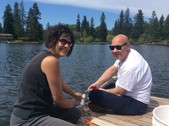 Joe & Janet at Echo
|
|
Important Update - No Volunteer Workshop This Year
This year's workshop has been cancelled due to our staff shortage through the spring. Marisa is taking a leave of absence to complete a Master's of Teaching Program, so Jen and I will be working to report last year's data, finish up the Loma and Sunday Toxic Algae Grant and get ready for a busy summer. Look for instructions this spring to sign up for site visits and equipment drop-off times. If you have any questions or concerns in the meantime, you can always reach me, Katie, at 425-262-2907. Thank you again for your enormous efforts each year, and we are excited to meet again as a group in 2021!
|
|
2019 Photo Contest Winners
In addition to showcasing last year's winners, we are now calling for 2020 photo contest submissions! In lieu of voting at the workshop I will send out an online survey where you can vote for your favorite. Submit up to 3 photos (including title) to lakes@snoco.org. The 2019 contest had 19 submissions, so I think we can get 20 submissions for the year 2020!
|
|
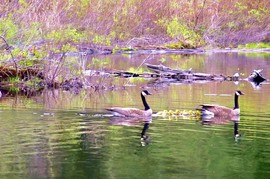 Life is Precious, Jim at Storm
|
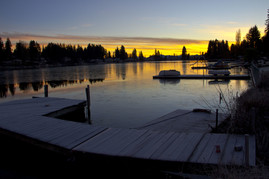 Frozen Sunshine, Mark at Serene
|
|
New Technology Helps Detect Toxic Algae
Modern technological advances are helping lake managers detect and respond to toxic algae blooms. A recent NPR story explains how artificial intelligence and new high tech monitoring stations can detect toxic algae that cause "red tide." Listen to the full story at NPR. In more technology news, the U.S. EPA separately developed the capability to detect algal blooms using satellite data. Their information is available to the public in an easy-to-use app called CyAN. Currently the app tracks algae at the 2,000 largest lakes and reservoirs in the US. However, technological advances are expected to make these types of technology useful for smaller lakes, like those in Snohomish County.
 “Red tide” observed in La Jolla, California // Image credit: Kai Schumann
|
|
Celebrating Outstanding Service
This November five volunteers were recognized by the Everett Herald for their 25 years (or more) of lake data collection. A huge thank you to Deb for her 26 years of monitoring at Crabapple, Steve and Nancy for 27 years at Martha North, and Dennis and Shirley for 25 years at Stickney. Read the article here.
We'd also like to recognize the following milestones from the last two years:
15 years - Chuck & Annette at Ruggs
10 years - Kurt & Vivian at Panther
5 years - Ric & Candi (Armstrong), Ozzie (Crystal), John (Goodwin), Chris (Lost), Ryan & Travis (Martha S), Chris (Riley), Sonja & Aaron (Serene), Jim (Storm), and Brad (Shoecraft)
|
|
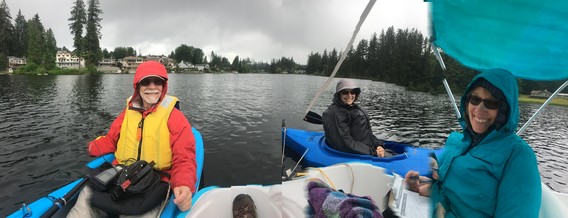 Panorama of Steve, Nancy, and Kim monitoring Lake Martha N.
|
|
Subscribe to Waterline: Keep up-to-date on Lake News
Are you interested in keeping up-to-date on lake-related news? If so subscribe to the Washington State Lake Protection Association (WALPA) quarterly newsletter, Waterline. Waterline features short, easy-to-read articles for lake residents and managers. It also features upcoming events like the annual conference and other events.
|
|
New Aquatic Plant Webpage for Lake Residents
One of our most commonly asked questions is "what is this plant growing in the lake?" Now we have a webpage to help residents identify plants and learn more about the benefits of native plants and the risks of invasive plants. Check it out and spread the word!
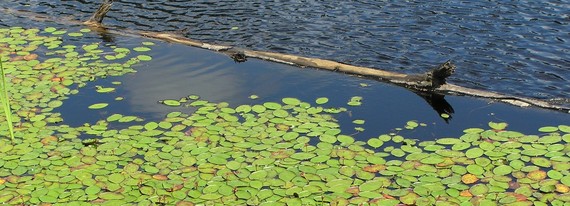 Native Watershield at Crystal Lake
|
|
Lake Loma Toxic Algae Control Plan Now Complete
Lake Loma has suffered from poor water quality and resulting toxic algae blooms. Snohomish County, with grant funding from the Department of Ecology, developed an Algae Control Plan in coordination with community members. The goal of the plan is to provide the community a road map to reduce phosphorus pollution, the underlying source of toxic algae blooms to the lake. Visit the Lake Loma webpage to learn more, and stay tuned for an update on the second grant-funded algae control plan for Sunday Lake. A special thanks to Cathy & Russell at Lake Loma & Connie and Brian at Sunday Lake for helping with data collection.
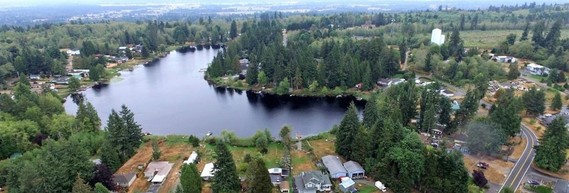 Aerial image of Lake Loma
|
|
|
|